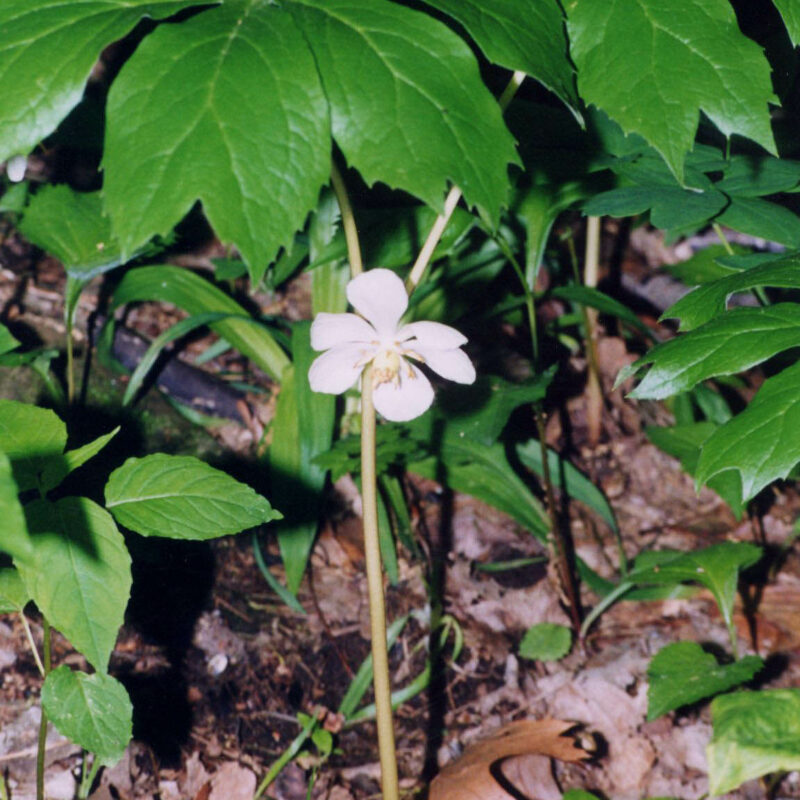May ApplePodophyllum peltatum
May Apples can thrive in dry and partly shady conditions, making them a good choice for under trees such as pines. They spread by rhizomes and can form large colonies.
USDA symbol: POPE
General Information
| Plant Type | Forb |
|---|---|
| Height | 1 to 2 feet |
| Light Exposure | Part Sun, Shade |
| Soil Moisture | Medium |
| Bloom Color | White |

Tolerances
| Flooding / Inundation Tolerance | Moderate |
|---|---|
| General Resilience | 4 |
| Salt Tolerance | Unknown |
| Stress Tolerance | Acidic Conditions |
Pollinator Value: Very High
| Bloom Months | May to June |
|---|---|
| Larval Host of | Moths |
| Specific Pollinators Hosted | Papaipema cerina, Papaipema rutila |
| Pollinator Benefit | Insect Pollinated, Supports Generalists |
Project Planning
| Project Type | Erosion Control, Restoration |
|---|---|
| Coefficient of Conservatism | 3 |
| Herbivore Sensitivity | Low |
| Lifespan | Perennial |
| Rate of Spread | Medium |
| Soil Stabilization | Shallow |
| Vegetative Reproduction | Clonal |
Range
| County | Dodge, Fillmore, Freeborn, Goodhue, Houston, Mower, Olmsted, Rice, Steele, Wabasha, Winona |
|---|---|
| Ecoregion | Driftless Area, North Central Hardwood Forests, Northern Lakes and Forests, Western Cornbelt Plains |
| Approximate Eco Province | Eastern Broadleaf Forest, Laurentian Mixed Forest, Prairie Parkland |
